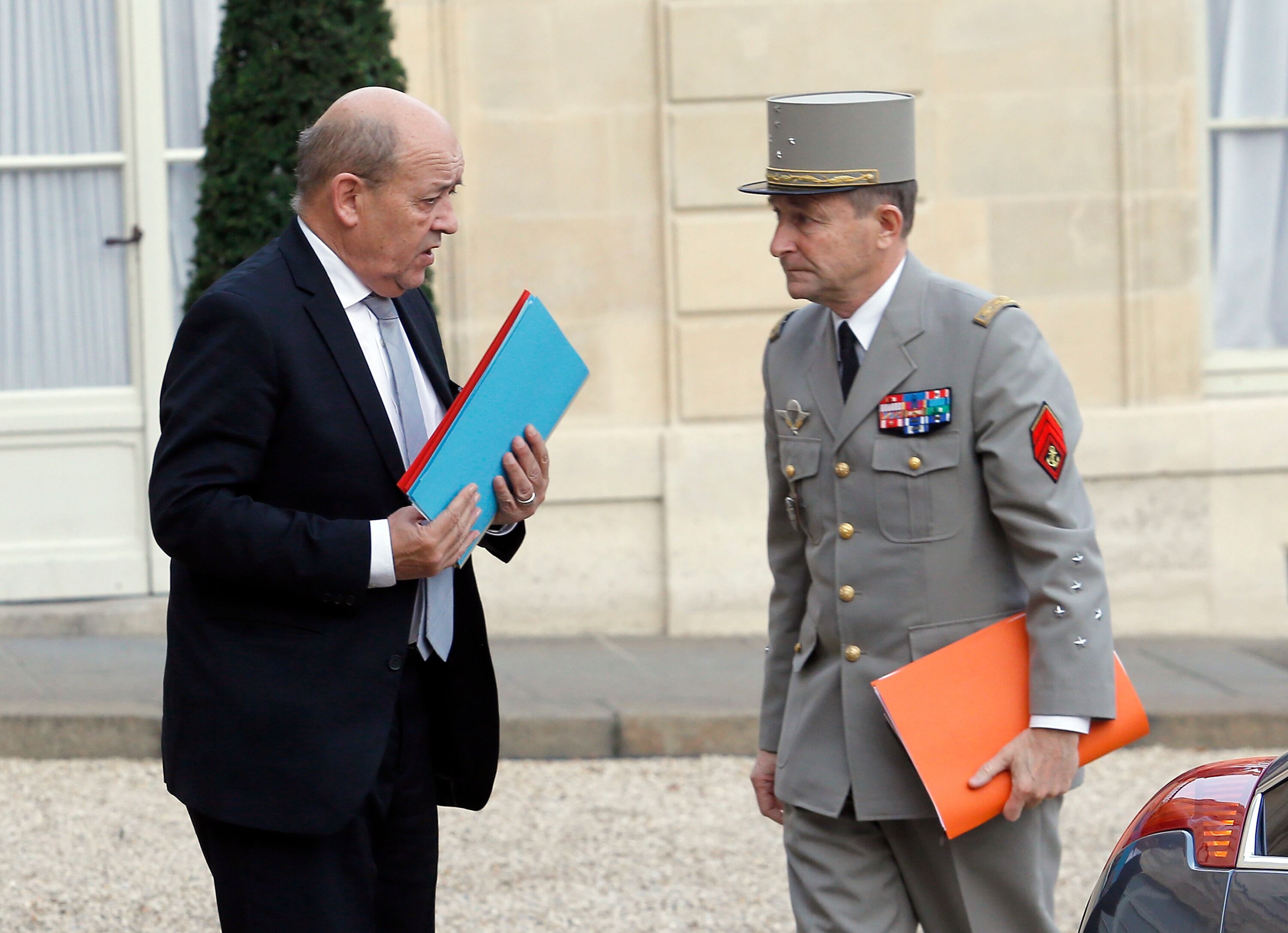PARIS — France unveiled Thursday a draft of its 2019-2025 military budget plan, setting €295 billion (U.S. $361 billion) on spending, which included better barracks, larger orders of Army armored vehicles, and studies on next-generation nuclear submarines and airborne nuclear missiles.
That spending plan compares to €190 billion in the present 2014-2018 budget law. The Armed Forces Ministry sees the budget law as a “renewal,” as the government seeks to “regenerate” the services. A first phase consists of €198 billion in the present five-year government term, with defense spending rising €1.7 billion each year to hit €44 billion in 2023. That compares to the 2018 budget of €34.2 billion.
That expenditure is covered by the government spending cap, which seeks to rein in the French deficit to 3 percent of gross domestic product, as requested by the European Commission. France has pledged to spend 2 percent of GDP on defense by 2025, a target set by NATO for member states.
RELATED

The second phase for 2024 and 2025 assumes an annual €3 billion increase, with much depending on the macro-economic performance. A government review will be held in 2021 to decide what to commit in the following budgets. A general election will be held in 2023, so the next administration will decide how closely it follows the budget law.
“There is much pragmatism,” said François Lureau of consultancy EuroFLconsult and former head of the French defense procurement office. The budget reflected the Army’s leading role in the Barkhane mission in Africa and the need for an overhaul of aircraft maintenance.
“Service is very expensive,” he added.
The budget law drew criticism from François Cornut-Gentille, a member of parliament on the finance committee of the lower house National Assembly.
“The main effort is pushed back after the five-year term, whether it is budgetary outlay, increase in personnel or delivery of equipment,” he said in a statement.
Two further setbacks were the Armed Forces Ministry carrying the full cost of overseas deployment and the lack of spending adjustment for inflation.
The Army and nuclear deterrent were seen as major beneficiaries of the budget.
Spending on buildings and infrastructure for the services will rise 14 percent, seeking to remedy the poor conditions of the bases and family housing. Some 6,000 personnel will be recruited, reversing a previous policy of cutting the size of services. Some 750 staff will be recruited to support arms exports.
The Direction Générale de l’Armement procurement office had already been authorized to recruit 80 staff for 2017-18 to support export deals, following a request that stemmed from the sharp rise in foreign arm sales.
On equipment orders, the Army’s Scorpion modernization program will see a faster delivery, with half the fleet of Jaguar troop carriers, Griffon combat vehicles and Light VBMR vehicles delivered by 2025.
“That is very good news,” a defense executive said. “There was a sanctuary for Scorpion.”
Other notable investments:
- The Navy will receive the first four Barracuda nuclear-powered attack submarines, last three Fremm multimission frigates and first two FTI intermediate frigates.
- There will be studies on arming the air defense version of the Fremm with the Aster Block 1 NT missile.
- The Air Force will receive six armed Reaper drones, the first European medium-altitude, long-endurance UAV, 28 Rafale fighter jets and 55 upgraded Mirage 2000D fighters.
- Acquisition of the A330 MRTT tanker transport aircraft will be increased to 15 from 12, with the first 12 delivered by 2023 and the remaining three shipped by 2025.
- An annual €1.8 billion will be spent on concept studies on future weapons, including fighter jet, heavy tank and replacement to the nuclear-powered Charles de Gaulle aircraft carrier.
- The annual budget for feasibility studies will rise to €1 billion from €730 million.
A total €112.5 billion will be spent on equipment in 2019-23, of which €25 billion earmarked for studies on the next-generation nuclear submarine and airborne nuclear missile. Orders for the H160 for the joint light helicopter were pushed back to 2022, with delivery in 2028 in the next multi-year budget law.
For intelligence gathering, there will be orders for six light ISR aircraft, and Musis and Ceres satellites to gather visual and electronic intelligence. The government will seek a 36 percent increase in the number of programs run in cooperation with European allies.
It remains to be seen if the U.K. will be considered a European partner once Britain leaves the European Union, a second defense executive said.
The next step is that the parliament will debate the draft budget law.







